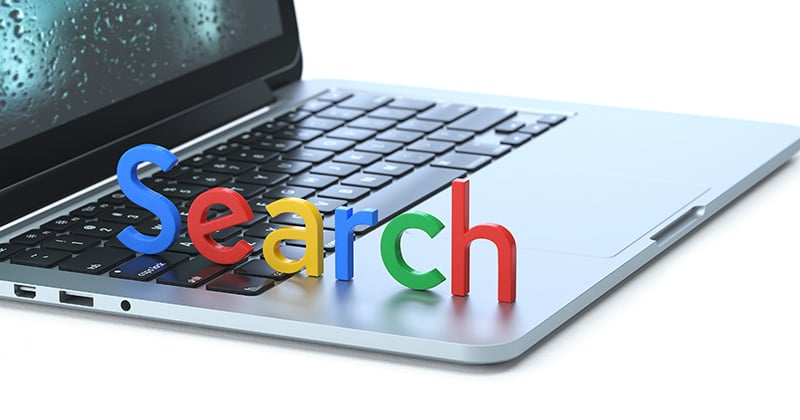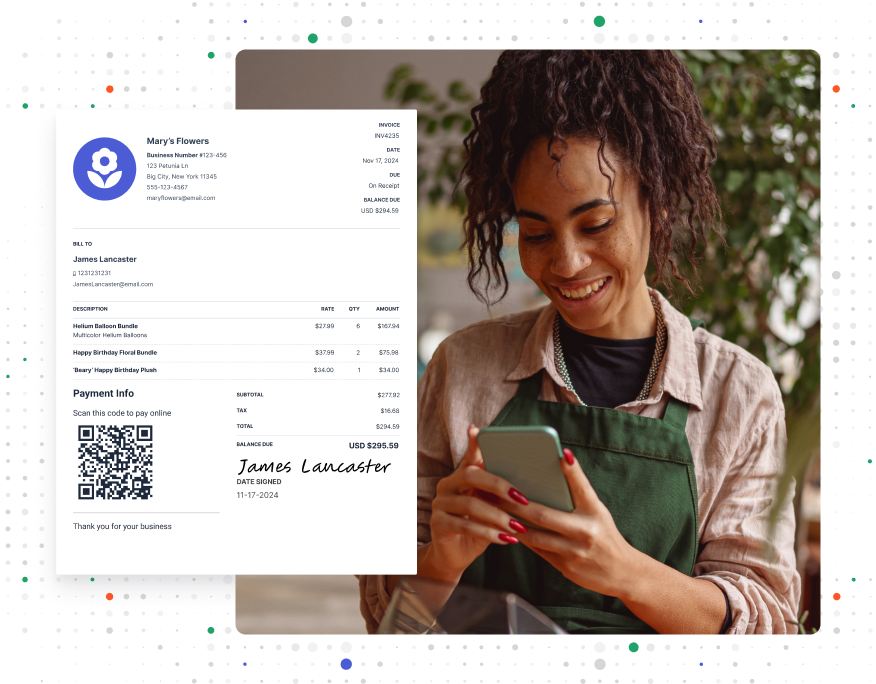Facebook Ads vs. Google Ads: Which Should I Use for My Business?

Digital marketing can be the key to unlocking your next phase of growth. Or it could be a great big waste of time and money.
Your results depend on a lot of different things, one being the platform you use.
In this guide, we’ll compare Facebook Ads and Google Ads. We’ll explain how they work. We’ll look at their strengths and weaknesses. And we’ll see how they stack up side by side.
By the end, you’ll be able to make a smart, confident decision about which paid ads to run.
Now, let’s get to the bottom of the Facebook Ads vs. Google Ads debate.
What Is Google Ads?
Google is the world’s most popular search engine. Google Ads is the proprietary ad platform that gets your business in front of those using Google Search.
You might be familiar with search engine optimization (SEO). The goal of SEO is for your web pages and blog articles to organically appear near the top of Google search results for relevant keywords.
With Google Ads, this happens automatically. You bid against other advertisers to have your site appear above organic results. And considering the top three search results get more than half of all clicks, this is great for your traffic numbers.
Google Ads also show up on non-search websites (think banner ads on your favorite news site), on mobile apps, and even in videos.
FROM ONE OF OUR PARTNERS — Watch Your Marketing Dollars Work: The Power of Paid Advertising
How Does Google Ads Work?

Google advertising lets you pay to show up in search results and across a network of web pages. But how?
Put super simply, you write an ad for a web page that targets a keyword relevant to your ideal audience. You place a bid on that ad and wait for someone to click on it.
It’s important to know that Google Ads uses a pay-per-action pricing model. You pay when someone does something, like click on your ad [called cost-per-click (CPC)].
Another option is cost-per-mille (CPM), where you pay per 1,000 impressions. Mille is the Latin word for thousand, if you’re wondering.
There’s also cost-per-engagement (CPE), where you pay when a user follows your call-to-action (CTA), like signing up or watching a video.
The second thing to understand is that the price-per-action changes based on:
- Who else is running ads targeting the same keyword
- How many people are searching for your keyword
- The time of day or year your ad is running
When you publish your ad, you choose what’s called a “maximum bid.” This is the most you are willing to pay for a click or 1,000 impressions or engagement.
Your maximum bid is not the same as your campaign budget. Your budget is the highest Google Ads cost you will pay each day.
You can set your bid and budget manually. Or you can let Google decide for you. If you choose the latter, proceed with caution. Costs can rack up fast if you are not skillfully managing your ad accounts.
RELATED ARTICLE: — How To Register a Business in the US: A Comprehensive Guide
Advantages of Using Google Ads
As incredible as it sounds, more than 93.1 million websites worldwide use Google Adsense. Clearly, it offers some serious value.
Here are the pros of using Google Ads.
1. Leverage Google’s Reach
Almost nine in 10 people searching online are doing it through Google. This is head and shoulders above Google’s top competitor, Bing, which has just under 4% of the market share.
So, if someone’s looking for what you sell, they’re probably Googling it.
2. Attract High Purchase Intent Audiences
High purchase intent audiences are consumers who are far along in their research/purchase journey. They know they need to make a purchase and are close to doing so.
This kind of intent matters. They know they have a problem and are ready to fix it. All that’s left for you to do is show that you have the best solution.
Now, compare that to a billboard or radio ad. You are just hoping the right person hears or sees it at the right time.
3. Use Advanced Targeting Options
You don’t want to waste your ad budget on the wrong audience, but with Google advertising, you don’t have to.
You can target by:
- Keyword
- Location
- Device
- Demographics
It’s not about attracting as much traffic as possible. Instead, it’s about winning the clicks that turn into real sales.
What Is Facebook Ads?

Like Google Ads, Facebook Ads is another platform for running paid ads. Although Facebook Ads is now known as Meta Ads, we’ll stick to its original name for simplicity in this article.
But instead of using Google or another search engine, your ads show up on Facebook and the Meta network (this includes Instagram).
Facebook has 3.07 billion monthly active users globally. Instagram has 2 billion. That’s a combined reach of over 5 billion users worldwide (of course, some of these users would overlap)!
Facebook Ads appear in users’ feeds. They can be videos, images, text, or carousels.
RELATED ARTICLE — How To Start a Consulting Business in 6 Steps
How Does Facebook Ads Work?
Google users are actively searching for a product or service. Facebook and Instagram users are catching up with the latest on their friends and favorite influencers. So, how do ads work?
Meta is smart. It looks at people’s data and makes (very accurate) guesses about what people want. Then, it serves them ads it thinks they’ll care about.
When you make a Facebook ad, you choose your audience. You’ll select from a whole bunch of options like:
- Location
- Age
- Gender
- Interests
- Behavior
- Life events
Facebook Ads has updated to only allow Cost Per Mille (CPM) bidding. However, you can choose to be charged either by click or impression.
Once you set your bid, your ads will then start popping up in feeds, stories, and sidebars across Facebook and Instagram.
The main goal here is usually to drive people to your website.
RELATED ARTICLE — What Is CRM and How to Find the Best Option for a Small Business
Advantages of Using Facebook Ads
If done right, Facebook Ads Can get you in front of people who need (or want) what you offer. Here are the advantages.
1. Try More Advanced Targeting Options
In some ways, Facebook’s targeting goes deeper than Google’s.
People tell Facebook what they like just by using the platform. Every follow, click, like, and watch gives Meta valuable intel.
You can then use that intel to target the right audience for your product or service.
2. Build Your Brand With Memorable Ads
Social media is where brands get human. Think about it—your business appears alongside friends, family, creators, funny videos, memes, etc.
This makes it a great space to build real brand awareness with ads that actually feel like your brand.
You can be playful, emotional, direct, or formal—whatever fits. If your ad speaks your audience’s language, you make a lasting impression—even if they don’t click.
That kind of recognition pays off over time.
3. Get More Cost-Effective Results
“As Meta prioritizes user-relevant ads, creating high-quality campaigns that are highly tailored to your target audience is one of the most cost-effective strategies.”
In other words, better targeting and messaging mean a lower cost for Facebook Ads.
That’s not the only reason Facebook Ads can give you a great return on investment (ROI). They have a built-in tool called Advantage+ campaign budget.
This uses artificial intelligence (AI) to get the most results for the lowest cost.
Google Ads vs. Facebook Ads: Similarities and Differences

Both platforms let you run paid ads. Both can help grow your business. But they work a little differently—and which one you choose depends on your goals.
Here’s how they compare.
1. Reach
Google and Facebook both have massive reach.
Google connects you with people who are actively searching for something. That’s great if you’re looking to catch buyers in the moment.
Facebook Ads are placed on both Facebook and Instagram. With billions of monthly users between them, you’re getting in front of a huge audience. Beyond social media, Meta also places ads across the web via their ad network.
2. Targeting Options
Both platforms offer in-depth targeting. But how they do it is a bit different.
With Google, you can target by keyword, plus things like location. This helps you reach people with strong purchase intent, which is ideal for conversions.
Facebook now offers Advantage+. This feature uses AI to analyze your website. From this analysis, Advantage+ determines which users to target with your ads.
3. Ad Formats
Google Ads are mostly text-based. If you’ve seen search results with a tiny “Ad” label, those are paid ads.
Facebook Ads give you more room to be visual. You can use images, videos, carousels, or a mix of formats. This makes it easier to show off products or tell a story.
4. Cost
Both platforms give you tools to manage your spend. You can set daily budgets, cap your bids, and stop campaigns anytime.
They also both reward ads that are relevant. The more targeted and useful your ad is, the less you’ll usually pay.
When it comes to ROI and ROAS, Google is typically more cost-effective than Facebook.
While Google Ads can get expensive fast, you’re advertising to potential customers ready to spend their money. That means it can generate sales quickly and profitably if managed well.
3 Tips to Choose the Right Ad Platform for Your Business
Google Ads and Facebook Ads both have their strengths. In fact, most often, they act as a complement to one another. That’s because Google Ads is focused on paid search while Facebook Ads is for outreach prospecting.
You could say that paid search marketing is most important, if you only have budget for one. However, here are a few things to consider to help decide between Google Ads and Facebook Ads.
- Business objectives: Are you trying to drive immediate sales? Or build awareness? If you’re chasing conversions, Google might be the way to go. If you want more visibility, Facebook could be a better fit.
- Budget: Google Ads can get pricey, especially if you’re in a competitive industry. Facebook often gives you more reach for less spend.
- Content and creative resources: Think about what kind of ads you can realistically make. If you’ve got strong visuals, Facebook and Instagram give you more room to show them off. If not, Google’s text-based ads might be easier to get started with.
RELATED ARTICLE — What Is Customer Acquisition? Strategies and Costs
Top Takeaways for Facebook Ads vs. Google Ads
You have what it takes to solve your ideal customer’s problem, and advertising can help you tell them about it.
Get started now with these quick tips:
- Come up with a paid ads budget.
- Set goals by deciding what you want to achieve.
- Weigh up which platform best aligns with your goals.
- Draft a couple of ads and run them using a small portion of your budget. Keep an eye on your results. When you’re happy with your ROI, you can scale.
Start Your First
Invoice Today
Create customized and professional
invoices and connect with clients
